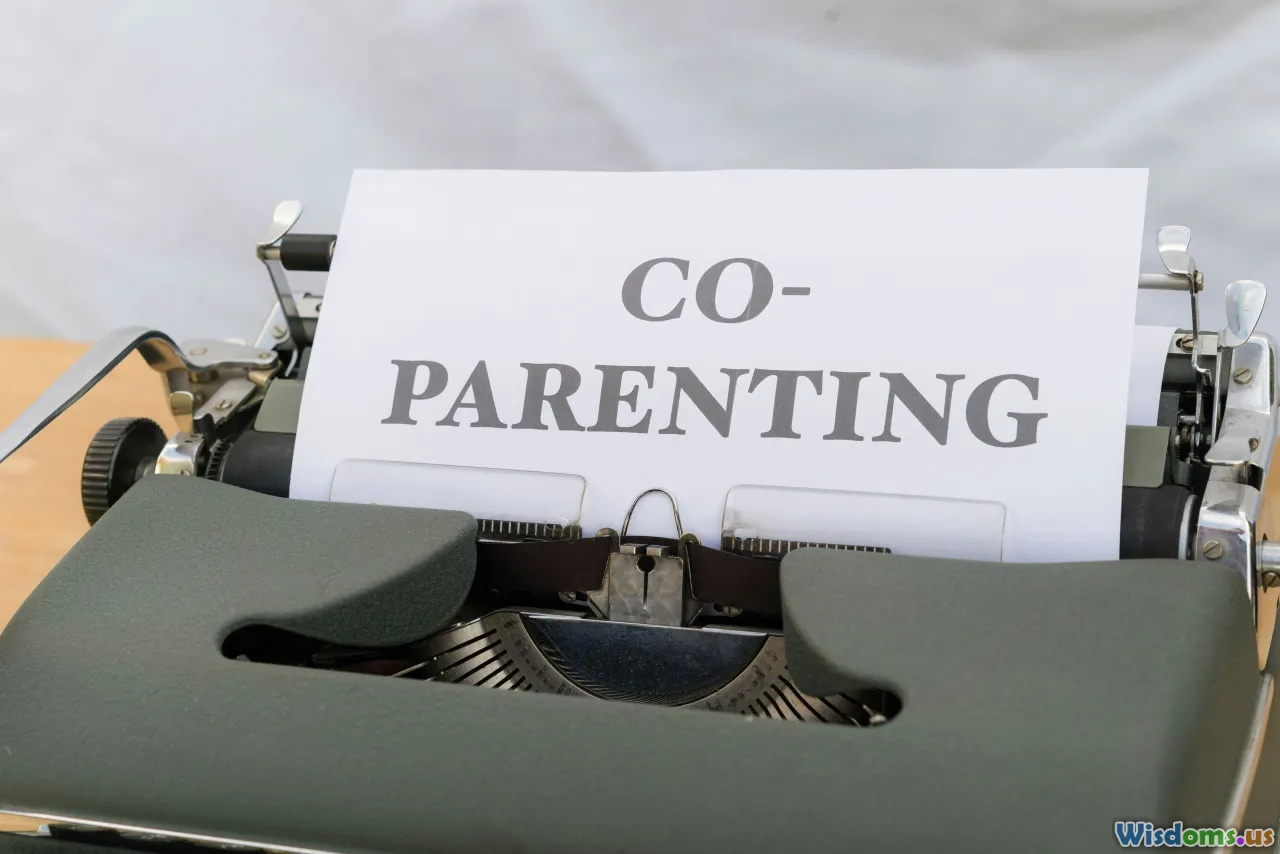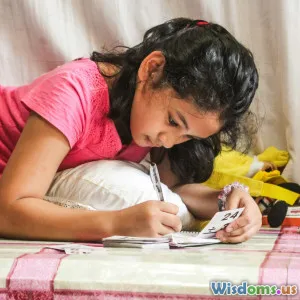
Why Discipline Is Tricky In Blended Households
14 min read Explore the unique challenges of disciplining children within blended households and discover effective strategies for fostering harmony and respect. (0 Reviews)
Why Discipline Is Tricky In Blended Households
Every family is unique, but blended households introduce a special set of complexities—especially when it comes to discipline. As families merge, new dynamics develop overnight, and rules that worked in the past may suddenly seem out of place. Managing expectations, emotions, and different approaches to discipline can leave parents and stepparents walking a tightrope. So what makes discipline such a perplexing puzzle in blended households—and how can families navigate these choppy waters gracefully?
The Uneven Playing Field

In traditional families, parents usually share similar values and histories, and the established set of house rules feels like common ground. In contrast, blended families must contend with children coming from different upbringings, often with diverging expectations about what behavior is acceptable. For example, one child may be used to screen time as a daily reward, while another may have never had access to a tablet or smartphone unsupervised. When rules clash in front of kids, tension often rises.
Consider Grace and Adam, who both brought children from previous marriages into their new household. Grace’s daughter, Emily, was expected to clear her plate and help with chores without being asked. Adam’s son, Tyler, had been allowed more freedom, with chores handled by adults. Grace and Adam’s different standards became a daily friction point—especially when they tried to encourage household-wide routines.
When children see one set of rules applied unevenly, jealousy or resentment may bloom. Siblings can quickly spot inconsistencies and often respond with statements like, “That’s not fair!” or “Why do I have to do that when they don’t?” This rocky terrain isn’t just emotionally exhausting for parents—it can dismantle the sense of unity the family needs to thrive.
Competing Parenting Styles

Parenting is rarely a one-size-fits-all affair, and blending families means merging discipline philosophies: strict versus lenient, authoritative versus permissive. Sometimes, these approaches are at opposite ends of the spectrum. Stepparents can also feel hesitant to step into a disciplinary role, concerned about overstepping boundaries or damaging budding relationships with stepchildren.
In practice, these philosophical schisms create hot spots. For instance, if one parent uses time-outs while the other leans on natural consequences, children may pick up on these differences and use them to their advantage. Even worse, if the biological parent undermines the stepparent’s authority—whether intentionally or not—it can foster division, rather than unity.
One real-life example is the story of Denise and Mark. Denise had spent years developing a collaborative, discussion-based discipline method. Mark, however, leaned toward more immediate, consequence-based discipline. When Mark tried to put Denise’s children in time-out for breaking a minor rule, the children protested, running to Denise for rescue. She ultimately reversed Mark’s decision, which left everyone feeling frustrated.
Navigating Emotional Landmines

Discipline rarely unfolds in a vacuum—especially when kids are processing significant emotional transitions. Children in blended families often wrestle with loyalty conflicts, unresolved grief, and a lingering sense of instability. Stepparents may inadvertently become scapegoats for these emotions, with children challenging rules to exhibit control.
If a household’s emotional temperature feels high, every discipline moment is loaded with subtext: "You’re not my real dad," "I miss how things used to be," or "If I create chaos, maybe things will go back to normal." These undercurrents make it harder to discern when a child is testing boundaries versus struggling with loss or uncertainty.
Research indicates that children in blended families take an average of 2-5 years to fully adjust to new living situations (according to the American Academy of Child & Adolescent Psychiatry). Navigating discipline amidst this adjustment window requires extra patience and sensitivity. Some families find that seeking external support, such as counseling, can be invaluable in working through these emotional landmines together—a united front supported by an impartial third party can neutralize miscommunication and set healthy expectations.
The Interference of Co-Parenting Across Households

Blended households often juggle complex schedules and shared custody, which means discipline doesn’t always end at the front door. What’s allowable or forbidden in one home may not be honored in the other, sending ambiguous signals to children.
Imagine a situation where a child's misbehavior is disciplined at mom's house, but goes unaddressed during a weekend visit at dad’s. Alternatively, dad might undo or undermine mom’s punishments, saying "I'm here to make sure you have fun." This lack of consistency chips away at authority, making both parents’ jobs infinitely harder.
Effective co-parenting calls for structured communication. Strategies such as shared online calendars, group text chains focused solely on the kids, or even regular family meetings can help ensure that discipline carries meaning beyond the confines of one home. It’s best when parents present a united front, even if they disagree behind the scenes—children thrive best with structure and predictability.
Power Dynamics and Stepparent Challenges

The role of a stepparent comes bundled with both opportunity and limitation. Stepparents frequently find themselves in positional limbo: expected to contribute to household discipline, but sometimes treated as outsiders when they do. The "You're not my parent!" retort can sting—and create real doubt about how to proceed.
Building authority as a stepparent isn’t about asserting control, but rather about earning trust and respect over time. Many experts recommend that, in the early stages of a blended family, stepparents should act more as supportive friends than enforcers of discipline. Once relational groundwork is set, gradual increases in authority can be introduced by involving everyone—kids and adults alike—in the process of setting household standards. A family meeting in which all members weigh in on household rules can go a long way to establish ownership and acceptance.
Famed family therapist Ron Deal suggests the “babysitter rule” as a starting point: stepparents provide supervision and uphold parental decrees, but leave significant discipline to the biological parent until bonds are stronger.
Perceived Favoritism and Sibling Rivalry

Every parent strives for fairness, yet in blended families, perceptions of favoritism are particularly volatile. Children might notice preferential treatment for one sibling—real or imagined—and amplify it as evidence that “the new family isn’t fair.” Add in the notorious intensity of step-sibling rivalry, and minor transgressions can escalate into household feuds.
For example, when incentives or punishments appear unequal, step-siblings may not trust the process. Michelle, a mother of three (two biological, one stepchild), recounts how an inadvertently misplaced compliment sparked weeks of resentment between her children. She’d told her stepson how proud she was of his report card improvement, only for her biological daughter to claim, “You NEVER praise me like that!”
Proactively addressing favoritism demands self-awareness, and including children in household decisions wherever possible. Rotating responsibilities fairly, keeping routines and rewards transparent, and assuring each child receives one-on-one time can defuse much of the tension before it spirals.
Practical Strategies for Harmonious Discipline

While no solution is perfect, several actionable strategies can help families create a more unified approach to discipline:
- Agree on Core Values and Non-Negotiables: Parents and stepparents should prioritize candid conversations about core beliefs and which rules are truly essential. Identify non-negotiables (like physical safety, respect, or privacy) and agree to enforce these consistently, even if room remains for compromise on other matters.
- Communicate Expectations Clearly: Children benefit from clarity. Posting house rules, conducting regular meetings, and discussing changes in advance go a long way in reducing confusion and anxiety.
- Practice Empathetic Discipline: Meet misbehavior with curiosity before consequence—seek to understand what’s really driving it. Emotional check-ins or cooling-off periods help ensure consequences are measured, not merely reactions to frustration.
- Support Stepparent Authority Gradually: Develop the stepparent’s role step-by-step, starting as a supportive adult and building up disciplinary involvement with the blessing of the biological parent.
- Coordinate With All Caregivers: Whenever possible, keep open lines of communication with other adult caregivers—ex-spouses, extended family members, and childcare providers—to promote consistency.
- Invest in Family Rituals: Sharing meals, establishing regular game nights, or volunteering together builds positive memories and reinforces a sense of connection beyond conflict.
The Long View: Growth Beyond the Rules

Ultimately, discipline in blended households is less about ironclad rule enforcement and more about fostering growth, trust, and resilience. Difficult moments, when handled with kindness and transparency, provide the soil for long-term family connection.
Families who have weathered these challenges often reflect that perseverance pays off—what feels like a battleground can transform into a playground as trust evolves. Over time, even the most turbulent blended households can discover ways not just to survive, but to thrive together.
Navigating the tricky terrain of discipline in a blended family is no small feat, but with patience, communication, and a focus on the relationships at the heart of every rule, harmony and understanding are within reach.
Rate the Post
User Reviews
Other posts in Blended Families & Step-parenting
Popular Posts
















